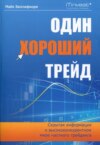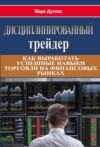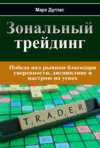Читать книгу: «Probabilistic Theory of Stock Exchanges», страница 2
Returning to the beginning of the discussion, let us note that the probabilistic economics we developed was also empirical or heuristic in content, based on our twenty-five years of entrepreneurial experience in the investment business. So, in this respect it is no better than any other economic theory; thus, it is virtually unknown in the scientific economic community. But there is an important nuance. Unlike all other theories, probabilistic economics has a developed mathematical body suitable for calculation of any market economic systems. The results of these calculations can be compared with known experimental data, for example for exchanges. In this regard, in this study we have set a goal to find experimental evidence that the very foundations of probabilistic economics are valid, in other words, to verify the initial premises and assumptions of the theory by means of experiments. Moreover, this should be done the way it is done in physics, namely by continuously comparing the results of ab initio calculations of the dynamics of exchange systems and the results of experiment, as well as by subsequently confirming or rejecting the assumptions made. Only this approach, or method of investigation, which we call the physical method in economic science and which is universally recognized in the natural sciences, will make it possible to develop an adequate economic theory capable of giving a sufficiently accurate quantitative description of how real markets of any complexity work, as well as of making sufficiently reliable forecasts of markets and economies development, at least in the short term. In other words, we aim thereby to establish sufficiently accurate experimental justifications for economic science.
Statement two. Let’s recall the great importance of the long-term observations of the solar system planets behavior [Smith, 2016] in the development of modern physics and what John von Neumann said (see above). Richard Feynman was of the same opinion: "Astronomy is older than physics. In fact, physics emerged from it when astronomy noticed the striking simplicity of stars and planets motion; the explanation of this simplicity was the beginning of physics.” Figuratively speaking, the solar system played the role of the first experimental physical laboratory in the history of science. Of course, it was impossible to perform experiments on it in the modern sense of the word, but it was possible to observe the motion of the planets without interference for a long time, and based on these observations the scientists could try to find the rules governing this motion, and even calculate the trajectories of the planets, which was actually done [Feynman et al., 1978; Smith, 2016]. Fortunately, this movement was frequent enough, almost exactly the same, that it allowed us to observe the same phenomena for quite a long time. And the strict periodicity in the planets motion clearly indicated the existence of strict rules governing this motion. It was just a matter of discovering them.
What about economics? Fortunately, we have at our disposal a wonderful experimental economic laboratory that has the potential to brilliantly play the same role in economics that the solar system has played in physics. These are, of course, the exchanges that determine the market prices of goods, services and, especially important in today's economic world, financial assets of various kinds. Physically speaking, exchanges measure prices at each moment of trading, which are unconditionally accepted by the economic community as market prices, i.e., as valid and fair. By measuring market prices and making them universally available, exchanges play an enormous role in modern economic life, providing everyone with a basis for making crucial economic decisions. Despite the important role of exchanges in the real economy, the importance of exchanges in economic theory is far from significant for the reason that a sufficiently developed theory of the exchange capable of adequately describing the dynamics of exchange prices in real time is not available in literature, as far as we know (see, for example, reviews in [Ippoliti and Cheng, 2017]). It is our purpose in this paper to develop such a dynamic economic theory, and fulfillment of such purpose, among other things, will help to confirm (or refute) the foundations of probabilistic economic theory, which is of particular interest to us. Looking ahead, we note that here, we also found the same "striking simplicity of movement" of market agents, despite the fact that the exchange, without any doubt, is a complex dynamic nonequilibrium probabilistic system.
We have selected several different assets traded on the Moscow Exchange as the initial objects of our study, for the simple reason that historical data on the trading of these assets have recently been posted on the exchange website, so any researcher can use them to verify the correctness of our calculations. Let us emphasize that these historical data contain almost all quotations of all exchange agents at each moment of time during the whole trading day, not only quotations in a small «cup» near the current market price.
Let us clarify once again: this book represents, in fact, the results of the subsequent development of probabilistic economics, which we developed earlier [Kondratenko, 2005, 2015] for quantitative research of multicommodity multi-agent market economies. This theory in a fairly general form is developed on the basis of one axiom and six general principles that have such a simple and clear logic and rationale under them that they can be considered mandatory for inclusion in any sufficiently adequate economic theory. The way this theory can be used to set and quantitatively solve problems of real economic practice is illustrated in the mentioned works by examples of the simplest model economies, namely one-commodity economies with one buyer and one seller. In the present paper, we show how these theories can be used to quantitatively describe more complex real market economic systems, e.g., highly organized regulated commodity, stock or financial markets with a generally unlimited number of agents, namely exchanges. It turned out that for this purpose it is enough to introduce one more important assumption, namely the equivalence hypothesis, which we will describe further in detail. The good agreement of the calculated exchange prices and trade volumes with the experimental values during the whole day trading session for various assets serves as a direct proof that the theory of exchanges is based on correct principles and hypotheses. The main final result of this work can be considered to be the creation of the organized markets (first of all exchanges) theory fundamentals, the application of which already at the initial development stage has given us an opportunity to shed light on the basic rules governing the functioning of highly organized markets.
Chapter 1
FUNDAMENTALS OF PROBABILISTIC ECONOMICS
"In what follows I have endeavored to reduce the complex phenomena of human economic activity to the simplest elements that can still be subjected to accurate observation, to apply to these elements the measure corresponding to their nature, and constantly adhering to this measure, to investigate the manner in which the more complex economic phenomena evolve from their elements according to definite principles".
Carl Menger [2007]
1.1. PROBABILISTIC NATURE OF ECONOMIC SYSTEMS
This chapter describes probabilistic economic theory in sufficient detail, starting from the formulation of the most general statement of the problem to the derivation of the fundamental formulas, using the simplest model of a two-agent economy as an example. To begin with and to avoid misunderstandings and ambiguities, let us repeat once again that, according to the ideology of the physical method, probabilistic economics is a theory that is developed using formal methods of theoretical physics or, in other words, by analogy with how theoretical physics is developed, but, fundamentally, it is an economic theory rather than a physical one, since it studies the structure and dynamics of the economic world, where rules are not in any way directly related to physical laws that describe the structure and dynamics of the natural world. This is already clear from the fact that the subjects of the economic world are people and their actions in the processes of exchange of goods and services, whereas the subjects of the physical world are particles and fields, in particular atoms. And, to be definite, let us also emphasize that this new economic theory was based on the classical concept of supply and demand, that was reinterpreted in the style of modern probabilistic scientific thinking.
There is no doubt that the modern real economy is a complex, nonequilibrium, dynamic system. Therefore, it is possible and necessary to actively study its structure and dynamics in different ways and from different points of view. Our point of view is that we look at the economy mainly as a set of a huge number of intelligently thinking and dynamically acting people, each of whom is "not only homo sapiens, but no less than homo agens" [Mises, 2005]. In order to solve problems and achieve goals, these "homo agens" or, more precisely, market agents, under the influence of constantly changing life and business circumstances, are forced almost continuously to make new important decisions related to the purchase and sale of goods and services, production, marketing, logistics, personnel control, etc. Being rational, these people try to make those decisions that will bring the greatest benefit and return on the efforts made. Such rational decisions can only be made on the basis of sufficient information available regarding the factors affecting their interests and decisions. This is why people are constantly in the process of searching for and processing new market information that is important to them. But the real world is such that we never fully have sufficient and reliable information about things of interest to us, primarily because of time constraints. Moreover, due to our limited mental and technical capabilities, we are not always able to correctly process and interpret even the information that we have at the right time and in the right place.
It is our deep conviction that human nature, as well as the nature of market economic systems, is such that all our knowledge of markets is only approximate, so all market decisions can only be approximately correct and optimal. Moreover, in practice we are Explicitly or implicitly aware of this fact and take it into account in our decision-making and evaluation of its consequences. Strictly speaking, our market decisions can only be probabilistic in nature. And since, according to our view of the market economy, all economic processes and phenomena are exclusively the result of the actions of all the economic agents, it inevitably follows from all of the above that all economic processes and phenomena in the market economy are also, to some extent, probabilistic in nature. Consequently, only one step remains to draw the fundamental conclusion that the market economy is not just a complex, dynamic, nonequilibrium system, but also a probabilistic one [von Neumann and Morgenstern, 1970; Kondratenko, 2005, 2015; Mises, 2005; Waltuch, 2008; Keynes, 1921; Farjoun, Machover, 1983; Ball, 2003]. Therefore, in order to present a sufficiently complete description of such complex probabilistic systems, the corresponding economic theory should also be largely probabilistic. For this, at least, it is necessary to incorporate the concept of uncertainty and probability into economic theory at a suitable mathematical level, i.e., to develop a dynamic probabilistic economic theory that is sufficiently adequate to economic reality. Our research is devoted mainly to achieving this goal.
In this paper, we further describe the basic mechanisms of supply and demand formation, as well as the mechanisms of price formation, trade volume formation, and equilibrium setting in markets. The emphasis is on a detailed description of the nature of these fundamental market concepts and definitions in the standard general scientific language of physics and mathematics, which will allow us to critically re-evaluate these concepts and definitions within the framework of probabilistic economics.
The main paradigm of probabilistic economics for us is the following statement already formulated above. All markets consist of people – buyers of some goods and simultaneously sellers of these goods. Everything the market does is done by these people, and it is the actions of all these people in the market that determine all the market results [Mises, 2005]. A similar claim was once made by Richard Feynman et al. [1978] regarding physical multiatomic systems. It is this circumstance that allows us to establish an analogy between multi-agent market economic systems and multiatom physical systems and to bring physical approaches and language into economic theory. Based on this main paradigm and with careful consideration of all the basic features of human activity, explored in detail by Mises [2005], we will define the following six principles of probabilistic economics, which are essentially general postulates:
Principe 1. Supply and demand principle;
Principe 2. Agent principle;
Principe 3. Institutional and environmental principle;
Principe 4. Dynamic and evolutionary principle;
Principe 5. Trade volume maximization principle;
Principe 6. Uncertainty and probability principle.
The demand and supply principle reflects the fact that almost all important effects and processes in the market are determined by the interaction of supply and demand in the market. The agent principle testifies to the unique driving role of interacting market agents and the significant contribution to this interaction of social cooperation between them in the modern market economy. The institutional and environmental principle expresses the fact that the interaction of agents with different social institutions, different stakeholders and the external natural environment should be taken into account together with the interaction between the agents. The dynamic and evolutionary principle reflects the fact that market behavior is to some extent deterministic in nature and therefore, generally, can be analyzed by means of some equations of motion that describe both stationary behavior and the evolution of markets. The trade volume maximization principle determines the direction of the generally fairly free market under the influence of market forces. The uncertainty and probability principle shows that all market processes and phenomena, including decision-making, are probabilistic in nature and thus help us to understand what mathematical apparatus we need to adequately describe the behavior of agents and the market as a whole in the circumstances of uncertainty.
In essence, these principles define the main acting forces in the market and the main features of the market structure, so when performing specific studies of markets in our physico-economic models, they should all be taken into account, if possible, simultaneously, since they all represent market effects of the same significance in terms of influence on the final result of market operation, namely on the price structure and trade volumes in the market at each moment. If, for example, a certain economic study does not take into account the influence of the state, it cannot claim to be an adequate description of the modern economic world in which the role of the state is paramount: the state can both accelerate and suppress economic activity of other market agents. And the role of the state in the modern economy is twofold: it can both set important rules and introduce new institutions, thereby influencing the strategies of market agents, and be an active and strong market agent itself.
We emphasize that in these principles, if we consider them one by one, we can almost always find their «roots» in separate works of the previously cited authors of classical economic theory: Adam Smith (theory of commodity exchange, etc.), Carl Menger (theory of subjective value, etc.) and Ludwig von Mises (principle of methodological individualism, concept of market process, dynamic interpretation of S&D law, etc.). Here they are brought together, formulated quite clearly and it is emphasized that they should be taken into account simultaneously in the development of any economic theory, claiming for an adequate description of the real economic world, in which living people, rather than fictional characters like homo economicus in imaginary markets with perfect competition and with a supposedly all-powerful market hand, formed only by agents representing people and business without regard to the role of the state. What is brand new here, are the dynamic and evolutionary principle with the idea of finding equations of motion for market agents, the trade volume maximization principle to establish trends in the movement of market prices and the uncertainty and probability principle with the idea of using probabilistic strategies that the agents use to put their quotations and, most importantly, the elaborated mathematical apparatus, which allows for extensive quantitative research of real economic systems, including organized markets.
1.2. DIRECT AND INVERSE PROBLEMS OF ECONOMIC THEORY
To develop a probabilistic theory of the exchange, a physical method of economic research was used, the essence of which consists in using standard theoretical approaches of physics for modeling and calculating economic systems, with subsequent constant comparison of calculation results with experimental data to verify the used approaches, models and theory as a whole and for the purpose of establishing thereby the applicability limits of models and theory as a whole in those cases where their improvement and development is feasible. If the results of calculations contradict the experiment to a sufficient degree, the theory should be rejected without hesitation, and the process of theory creation should be started anew. For the sake of certainty and clarification of the theoretical problems studied in this book, we further call this option of the physical method application “a solution of the direct problem of the economic theory”, in which the results of economic activity (in this book, stock trading) are calculated based on some initial principles (ab initio principales), which are then compared with the corresponding experimental data (in our case – with the results of stock trading). We oppose this approach to solving, shall we say, the inverse problem of economic theory, in which by mathematical processing of experimental data one seeks to obtain information about the studied economic system. It should be said that we borrowed the terms "direct and inverse problem" from the theory of elementary particles scattering, which solves formally similar problems. It is known that solving the inverse problem in physics is very difficult and there is no reason to think that solving the inverse problem in economics will be easier. Here we reserve to developing the methods for solving the direct problem of economics as applied to stock exchanges, so all conclusions and discussions in this book refer only to the direct problem of economic theory, unless specifically stated. In order to avoid misunderstandings, we will repeatedly emphasize this aspect of this study.
It seems to us that one of the results of the extensive application of the physical method to the research of economic problems by solving the direct problem of economics will be the development of a new interdisciplinary science "physical economics", the birth of which is taking place right before our eyes. At present, physical economics is developing quite intensively in different directions, and one of these directions is probabilistic economic theory, the simplest, one may say, starting version of which is the probabilistic economics considered in this paper; and it is the latter that served as a basis for the probabilistic theory of stock exchanges. The main advantage of this approach is the availability of methods for solving the direct problem of economics, namely numerical calculations based on the first principles of such parameters and functions that can be directly compared with Experimental data, in our case – with the experimental results of real-time exchange trading.
According to the new physical method of thinking and research in economics, which we share and develop, in this monograph as well, the main requirement to such economic models, defining their main purpose, is the possibility and, to some extent, even art, with a few important axioms, concepts and principles to harmoniously, competently and simultaneously include them in the theory. The latter is very important, since, by the definition of the purpose, all concepts and principles play certain roles of comparable importance in the studied economy. And of course, constant verification of the assumptions made, concepts and the theory itself through numerical calculations and comparison with experiment data is necessary. It is this emphasis on experimental verification of theories that distinguishes the physical method from all other approaches, including neoclassical theory, which is currently mainstream in economics. In other words, the physical method of economic research presupposes a constant reliance on experiment, as it is usually the case in physics: numerical solutions of a direct problem are compared with the corresponding experimental data. We are fully confident that due to its naturalness and obviousness, in the nearest future the physical method will become the main method of economic research, will be called simply a scientific method of economic research, so the necessity to call it a physical method in economics will disappear due to irrelevance and unnecessity.
1.3. CONCEPTUAL MODELING OF ECONOMIC SYSTEMS IN PQ-SPACE
It is well known that the method of conceptual modeling of economic systems has long been widely used in economic theory. For example, the first and most famous concepts of neoclassical economics are S&D concepts. It is due to them that neoclassical theory has made a significant contribution to economic science. It helped economists better understand the basic components of the economic world, and with the help of a graphical interpretation this knowledge became more accessible to those interested in these issues, in particular students. In Austrian economics, the so-called method of ideal or imaginary constructions rightfully occupies one of the central places [Mises, 2005].
It is not customary in theoretical physics to emphasize the use of models, since theoretical physics itself can rightly be viewed as a conceptual mathematical modeling of physical systems. In particular, theoretical physics has developed the most advanced methods of theoretical modeling of complex systems. Moreover, here it has long been implicitly required from the researcher to perform quantitative numerical calculations of the structure and properties of such models with the highest possible accuracy, which, in turn, led to a striking development of quantitative methods in quantum mechanics of multiparticle systems, especially in quantum chemistry of multi-atom systems [Kondratenko and Neyman, 1990].
So, in this study deep structural and dynamic analogies between physical multi-atom systems and multi-agent economic systems are used in order to transfer conceptual, analytical and numerical methods from theoretical physics to theoretical economics. This transfer is performed by means of physical modeling of economic systems or, in short, physical-economic modeling. Our concept of physical-economic modeling is based on the well-known fundamental ideas of classical economic theory, first of all of Austrian economics. They are then combined and eventually, with the help of additional concepts and mathematical body adopted from physics, transformed into a new economic theory. This combination is organized through formal approaches and methods borrowed from theoretical physics, starting from the introduction into economic theory of the formal economic space concepts, motion trajectories of market agents and the market as a whole in such space, and finishing with the substantiation of the principal possibility of using the method of equations of motion in economic theory. To avoid misunderstandings, we emphasize again that the role of theoretical physics here is only to provide the mechanisms for developing a probabilistic economics. Relying on this theory, step by step, taking into account all principles of the theory simultaneously, we create more complex physico-economic models, taking into account the experience with previous models, which will be repeatedly illustrated in figures and graphs.
Of course, all physical-economic models are essentially conceptual mathematical models, just as in physics. The notion of "physical modeling" is used to emphasize an analogy with the rules or principles of modeling in physics. Further, this term will become redundant and will not be used. In the course of developing conceptual models of economic systems we will consistently introduce the concepts and principles of our theory, which will serve as a basis for the models’ frameworks, which, in turn, will be filled with new content step by step. We will start with constructing the simplest models with the help of analogies and formal methods of classical mechanics. For the sake of brevity, we will call such models classical models below. Naturally, only the first five principles will be used in the development of such a classical theory, or simply classics, since only they have analogues in classical mechanics.
So, Fig. 1.1 shows a typical graphic economic model of a market system, or simply, a market. This model, configured by analogy with models for physical multiparticle systems, uses a number of legends or conventions to demonstrate typical market structure.

Fig. 1.1. Graphical model of a single-commodity multiagent market economy in the economic two-dimensional price-quantity space. The dots inside the conventional sphere represent market agents: buyers (green dots) and sellers (red dots), forming demand and supply, respectively. The sphere is divided into two parts by the narrow blue line, which symbolically marks the narrow area of prices, where the transactions in the market are made at the current experimental price pExp. Buyers are in the left hemisphere and sellers are in the right hemisphere, since the buyers’ prices are lower than the sellers’ prices with very rare exceptions.
The main structural element of the model is the market itself, consisting of a certain number of interacting market agents: buyers and sellers. This market is not a closed system – it is an open system, because it is under the constant influence of its institutional and external environment, as well as other markets and other sources of influence. All these factors also serve as structural elements of the market, because they exert a strong influence on market agents, and without taking it into account it is impossible to obtain a reliable description of the mechanisms of market operation and its results.
Further, in order to be able to mathematically describe the dynamics of the economy, we should, just like in physics, place the entire market into some constructed economic spaces. Since such economic spaces, in contrast to the physical space, have an auxiliary and formal character, they can be constructed in different ways depending on the tasks to be solved. In this paper, it is appropriate to use the price-quantity space corresponding to two sets of independent variables, prices P and quantities Q for all traded goods on the market (PQ-space). For clarity, we denote the names of independent variables and their corresponding coordinate axes in bold. Despite its seeming simplicity, the concept of multidimensional economic space introduced in this study is of great importance in theory, since it provides a fundamental opportunity to describe the dynamics of economic systems in mathematical and graphical languages, as it has long been accepted in science.
This paper will extensively use the notion of "market structure", which includes both the agent structure of the market itself and all significant external factors and forces of various nature that affect the operation of the market. The study of the market structure and its various microstructures and the identification of the most important characteristics and connections between them represents the most important purpose of any economic theory.
The approach of probabilistic economics, aimed at solving the problem of adequate quantitative description of each agent’s behavior in the market, as well as the behavior of the market as a whole, is based on one rather simple premise or hypothesis, which we will call an axiom. This axiom, which has a rather general character, forms the basis for the implementation of supply and demand concept in a probabilistic economy.
1.4. AXIOM OF AGENT IDENTITY
All market agents are identical, only their supply and demand are different. This axiom is the starting point in building up the theory. It says that in the context of studying the basic or determinant features of the behavior of market agents in the market and the market as a whole, especially in terms of the formation of market prices and trade volumes, all market agents have common or identical properties, depending mainly on the income and expenditure of agents, or, more precisely, on their S&D for the goods and services produced and traded in markets. In other words, all buyers with the same demand are identical, just as all sellers with the same supply are identical. It can also be said that such agents are indistinguishable from the point of view of influencing the outcome of market trading or exchange. This axiom is something similar to the principle of indistinguishability of particles in physics, but, naturally, it is not as strict as the principle of indistinguishability in physics. It is the S&D of agents that primarily determine their economic behavior in markets and, ultimately, the behavior of all markets; they are the only characteristics of agents and the main input data for calculation methods in probabilistic economics, i.e. the parameters that determine the studied economic system.
Начислим
+15
Покупайте книги и получайте бонусы в Литрес, Читай-городе и Буквоеде.
Участвовать в бонусной программе












